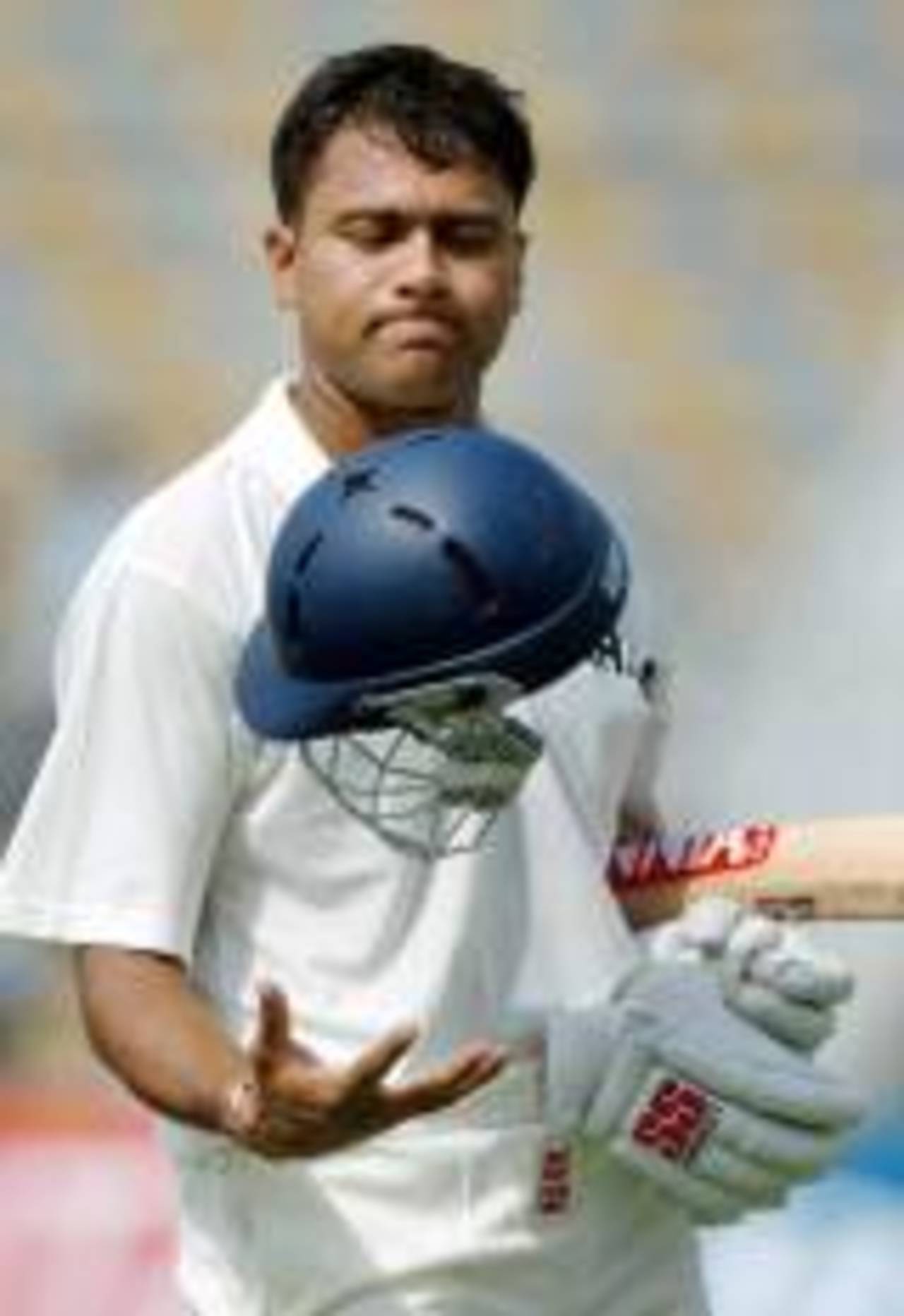Does the county format benefit players?
We don't have contracts at the state level in India and there is no benefit year even at the end of an illustrious first-class career
Aakash Chopra
25-Feb-2013

Jewel Samad/AFP
Hello people,
In the last couple of days I've bumped into two different people from completely different walks of life. One is an ex-journalist (he's just quit a media house and insists on being called an ex-journalist) and the other is a friend who is a lawyer in England. Both of them have one thing in common, i.e. their love for the game of cricket.
On both occasions the conversation drifted to the state of county cricket in England. Both were really unhappy with the way things were run in the country that gave birth to this sport. I argued that it's not the standard but the format that needs to be tinkered with. Probably they were playing too many games in a season and that causes the interest of spectators and players to wane so that towards the end of the tiring season they just go through the formality of turning up for matches while eagerly waiting for the season to finish. But my friends disagreed.
The ex-journalist said the standard was poor while the lawyer insisted a lot of players were clinging on to their places for monetary benefits. According to him most players get a three-year contract with the county and instead of trying hard every year, they take it easy for the first couple of years and then pull up their socks in the last year to get an extension and work towards the benefit year which is quite big in England. He added that this attitude towards the game infiltrates to the younger lot in the dressing room and they end up following their seniors. If that really is the case then this is a serious problem.
Instead of arguing further we got into a more informative chat. For starters I told him the value of having these senior guys around in the circuit. English cricket needs a few players like Mark Ramprakash to ensure that the standard of the game remains high. If young players dream of dismissing the Tendulkars one day then they must be good enough to breach Ramprakash's defence which, I must tell you, is not easy. Such players provide a reality check for these youngsters and give them a glimpse of the difficulties that lie ahead. Besides, having a senior in the squad provides the youngsters with a much-needed cushion that helps them grow as cricketers without putting too much pressure on them to perform every time they walk onto the field.
Even though my friend accepted my reason for having the seniors around, he insisted that the system is flawed. He said there are 18 counties and almost all of them have nearly 30 players in their books, which means that even for a second XI game, nearly 80% of the 22 players on the park are contracted with their respective counties. He couldn't see the point in having over 500 contracted players in the country when most of them do not have a realistic chance of ever playing for England.
Well, I couldn't quite get their system for we don't have contracts at the state level in India and there is no benefit year even at the end of an illustrious first-class career. The only way to cling on to our places in the side is to perform and perform consistently. Yes, the money has increased at the domestic level but one must do well and play the maximum number of matches to earn decently, which means first for one's state and then for one's zone and the opportunity to represent the zone is given only to those who've done well for their respective states. A few might argue that with the IPL the earnings of domestic cricketers have gone up manifold, which is true, but there are about 500 first-class cricketers in India and only eight IPL teams, which means a maximum of 160 players are required for the tournament and nearly 50% of those are either overseas players or the ones already playing for India. So that leaves only 80 places up for grabs for 500 first-class players. It doesn't sound that exciting anymore, right?
Even to get noticed and picked by an IPL team, one must perform in the domestic circuit.
So the problem of losing interest or clinging on to their places for money doesn't really exist in India. We agreed to disagree on various issues and like most discussions, ours too, ended without us finding any concrete solution to the problems we discussed.
Ciao.
Former India opener Aakash Chopra is the author of Out of the Blue, an account of Rajasthan's 2010-11 Ranji Trophy victory. His website is here and his Twitter feed here